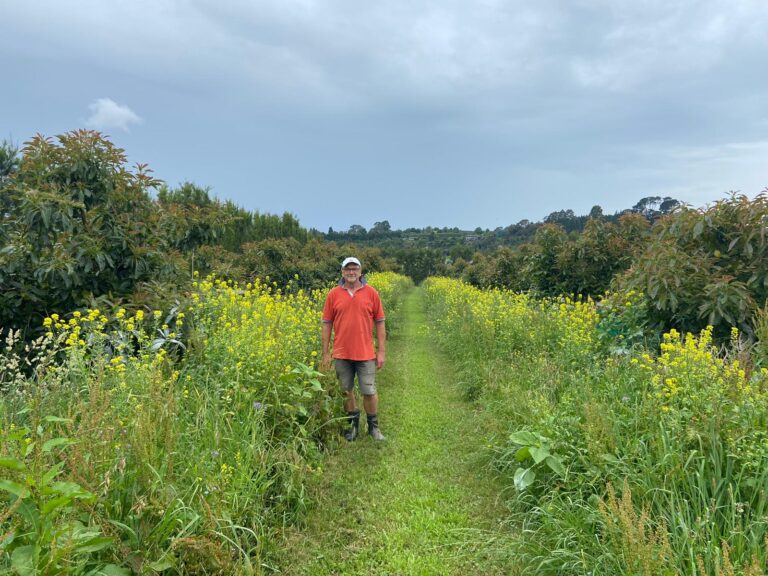Regenerative agriculture is a growing concept with orchardists worldwide. Many of our orchardists have got on to using regenerative planting to support the health and pollination of their avocado trees, keeping external inputs like sprays and fertilisers to a minimum or not using them at all.
The regenerative mixes contain different species of plants which have different roles in the orchard. Some have big tap roots to break soil compaction. Some fix nitrogen and make it accessible to the avocado tree. Some provide a safe haven for beneficial insects like steel blue ladybirds which eat thrips. And other flowering plants bring in bees to the orchard which is great during pollination and/or bring in other beneficial insects.
The intention with using regenerative mixes is to reduce sprays and fertiliser application, and preserve/improve soil health naturally. The thought behind improving soil health is that we increase bacteria and fungi levels as well as worm populations. This combines to benefit the avocado tree roots.
At a broader perspective, regenerative agriculture is generally summarized by five principles: minimum soil disturbance, constant crop cover of soil, keeping living roots in the soil, supporting biodiversity above and below ground, and keeping grazing animals in rotation. These regenerative practices work together in a cycle that can make land more productive, biodiverse, and less prone to problems like pests.
Microorganisms and other plant or animal matter that break down in soil are known as soil organic matter, and it’s key to maintaining healthy soil. As microorganisms naturally die and decompose with other organic material, they return nutrients to plants — it’s the circle of life, or in this case, the soil food web. A healthy soil food web can increase water retention, nutrient availability, and biodiversity. Plants that grow in healthier soil tend to require less added fertilizer, and are more pest-resistant — pests can’t digest enzymes from saps that grow in those plants.
Regenerative practices can make land more productive, cost-effective, and beautiful.

